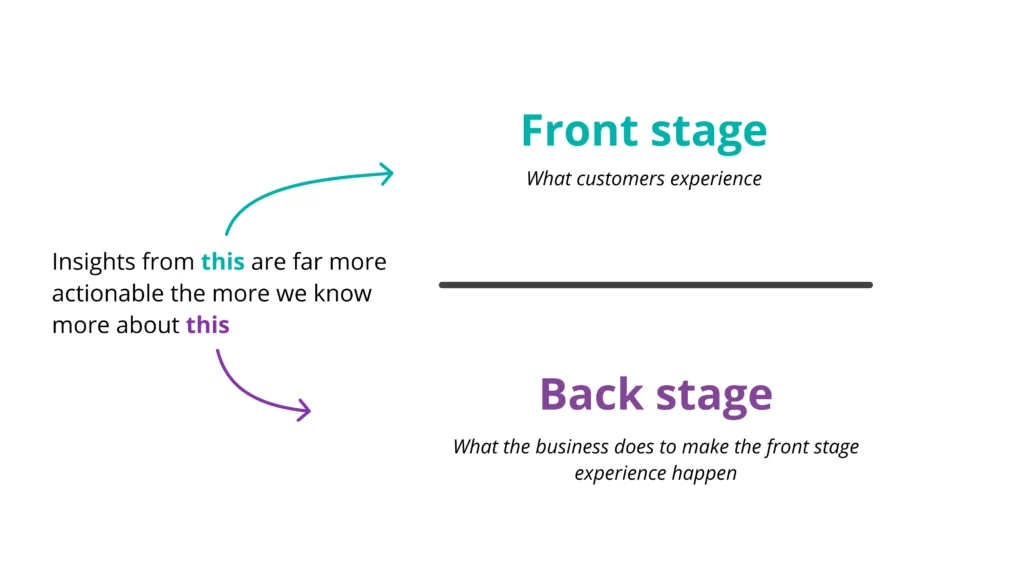All good design project starts by understanding who will use the design and research projects are the same. It’s vital to know who the research is for and why they need it. In other words, we need to know our client’s needs before we can understand their customer’s needs.
While end-users may benefit from product improvements driven by research insights, they’re not the ones who will use the research findings directly, the client is. Service design thinking, reminds us that the business commissioning the research (and the wider system around the product) are users too. If insights don’t align with the client’s context and goals, they risk being ignored, making the research seem ineffective or not worth the investment.
The benefit of knowing our clients better
Getting to know the business needs of our clients helps us as researchers know things like the UX maturity, long-term strategic goals, technical limitations and what has worked (and failed) in the past. Knowing this context going into the research helps us evaluate if the suggestions the users are making are even within the realm of possibility for the team to implement. After all, the business stakeholders, product pipelines and ticket backlogs are all needed to make use of end-customers’ suggestions.
Research is more than just gathering data and ticking the user-centred design box. Our main goal is to empathise with the human on the other side of the screen and deliver valuable, actionable insights.
What is an insight if it’s not actionable?
An insight is only helpful if you can do something with it. We’ve seen research fall flat when there are insights on one side, telling a rich story of interaction and sentiment, and implementation viability on the other side with an ocean of business rules between them.
Part of our job is to synthesise our research data into a format that can be easily used and understood by our clients to aid their product. If we as researchers don’t know the story behind the feature, then the insights – no matter how powerful– can’t be applied in a way that is truly meeting the needs of the other user in the system, the business.

Become a temporary subject matter expert
It takes a lot of effort to fully onboard a researcher into a product team or even a simple feature. So how do we get the perfect ratio of business insight without becoming full-blown team members? We’ve found that it helps when researchers become temporary subject matter experts.
We recommend onboarding researchers into the business context by giving just enough background on the feature to know what the challenges are, what they hope to learn and what they want to do with the data. Knowing how the business needs to implement change helps us deliver the research data in a way that respects technical and processes limitations, but can still help deliver improved experiences.
Our role is to understand how people interact with the technology; our client’s role is to clarify what that understanding needs to achieve for the business. Once we’re aligned, and can see the implications of what users are suggesting, we can shape the research findings into something our clients can act on, whether that’s through design decisions, backlog tickets, or broader product strategy.
As cheesy as it sounds, collaboration is key. We like to pull in the product owners, designers, engineers and analysts as often as possible. There is always space to learn more or adapt the way the insight could inform a technical outcome or better challenge an underlying issue.
We found the more time we spend working with our clients and their businesses, the better we get to know them and their unique situations. Over time we’re able to better evaluate where a theme of insights is headed and how to direct the research focus to fill the gaps in the knowledgebase. We love it when our role in a team evolves from being the people who report back on the data to the people who can spot bigger trends and gaps in a company’s customer knowledge.
Our belief is that researchers need to value the people and processes that will use the research insights and findings as much as the end-users. To do that, we need to get to know them first using the tried-and-tested research methodology – just ask.
If you would like to chat with us about how we can help you uncover insightful and actionable customer data, send us a message. We would love to chat.